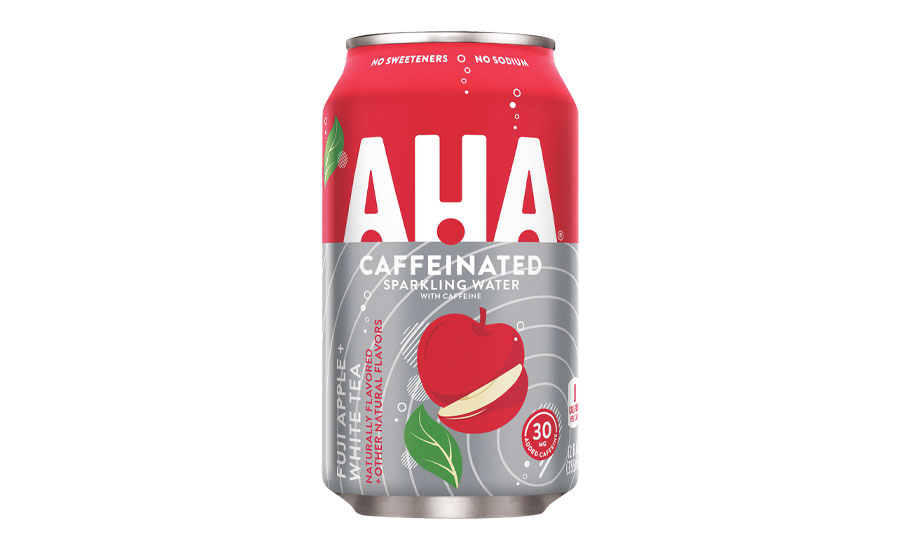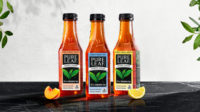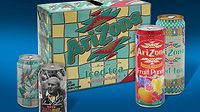Category Focus
US tea market recalibrates as RTDs drive category
Health attributes, flavor innovations bolster tea’s position with consumers

Primarily known for her work in country music, iconic singer-songwriter, actress, philanthropist and businesswoman Dolly Parton is quoted for having said: “Adjusting to the passage of time is a key to success and to life; just being able to roll with the punches.” While the impact of the pandemic is forcing the overall beverage market to “adjust,” experts note that the tea and ready-to-drink (RTD) tea category already have begun recalibrating.
Similar to other food and beverage categories, tea and RTD tea have been hit by inflation, price increases and supply chain constraints that have reduced unit sales within multi-outlets, notes Sally Lyons Wyatt, executive vice president at Information Resources Inc. (IRI), Chicago.
However, eCommerce is driving both dollar and unit sales in tea, Wyatt explains.
“Overall, the tea market has grown in dollar sales, due in large part to refrigerated RTD tea and tea sales online,” she says. “Refrigerated RTD teas are the only segment that are driving dollar and unit growth. The immediacy factor is a driver of choice.
“Consumers looking for a cold tea drink for immediate consumption are turning to these refrigerated options,” she continues. “This is also due because of mobility, but also the healthier aspects of these drinks and the caffeine versus other drinks in the marketplace.”

Image courtesy of AHA Sparkling Water
According to IRI OmniMarket data, refrigerated (RFG) tea generated dollar sales of $1.3 billion, a 9.1% year-over-year (YoY) increase for the 52 weeks ending April 17, in total U.S. multi-outlets. Meanwhile, unit sales increased 5.6% YoY for the same time-period, IRI data shows.
“Other tea segments have not done well over the past 52 weeks,” Wyatt notes.
In fact, with bagged/loose leaf tea and single cup tea posting total sales of $1.4 billion in multi-outlets, this represented a 3.4% YoY decrease for the 52 weeks ending April 17, IRI data shows.
“There are several different reasons for the declines, including supply chain constraints, visits to out-of-home options (specialty shops, etc.), inflationary pressures on consumers’ overall spending, etc.,” Wyatt says.
Chicago-based Mintel’s “US Tea and RTD Tea Market Report 2021,” notes that as bagged/loose leaf teas, single cup teas and instant teas’ sales growth began to shrink back in 2021, the RTD and refrigerated segment began to pick up steam.
“Changes in daily routines disrupted shopping habits and the added stress of dealing with a global health crisis resulted in robust growth to the once sluggish tea market,” the report states. “Consumers have continued to focus on both their physical and emotional health in 2021 because of the lingering pandemic. Despite loosened restrictions, more consumers will be adopting hybrid approaches to work and school going forward that will contribute both to new occasions and subdued impulse occasions for tea consumption.”
Health, wellness trends continue to drive tea market
As opportunities for tea brands are connected to forging or reinforcing stronger ties to wellbeing, tea drinkers are thirsty for more options, experts note.
In its “State of the U.S. Tea Industry Review of 2021 and a Look Forward into 2022” commentary, New York-based Tea Association of the U.S.A. Inc. notes that, as far as tea is concerned, the pandemic has been a mixed blessing.
“Overall, the tea market grew in 2021,” it states. “In reviewing tea import figures through September, total tea imports are up over 8%, with black tea exceeding 2020 by more than 9%. As reported last year, a qualitative study sponsored by the Tea Association reported that consumers turned to tea during those difficult times. This trend continued in 2021.
“In fact, several new research papers were published in 2020 and 2021 illustrating tea’s extraordinary ability to act as a booster of human immune systems,” it continues. “Whether potentially interfering with cancer mechanisms, enhancing heart health, slowing neurological decline, positively impacting weight management and preventing diabetes or improving bone health and lastly boosting immune functionality, tea is good for you.”
In April, Sri Lanka-based Dilmah Ceylon Tea Co. announced the launch of its high antioxidant bottled iced teas. The new bottled teas, available in six flavors, are made with either artisanal green or black tea with polyphenols content measuring as much as 120 mg in each 100-ml serving, the company says. Launched in partnership with Beverage Partners International (BPI) and Teabrary International, each bottle carries forth founder Merrill J. Fernando’s dedication to tea that is not only good for the palate, people and planet, but also harvested and brewed with ethical practices, it notes.
"Overall, the tea market has grown in dollar sales, due in large part to refrigerated RTD tea and tea sales online. … The immediacy factor is a driver of choice."
- Sally Lyons Wyatt, executive vice president at Information Resources Inc. (IRI)
“Consumers are looking for craft and ‘better-for-you’ products,” said Moshy Cohen, CEO at BPI, in a statement. “The Dilmah brand, with its heritage of quality and authenticity, brings a strong differentiation point into the ice tea category.”
Given the inherent health and wellness benefits of tea, added benefits are providing more variety in the category that is good for those consumers seeking specific assets, IRI’s Wyatt notes.
“Immunity claims like teas with immunity defense claims, as well as pre/probiotic claims are doing well,” she says. “Diet claims like ‘vegan’ and ‘vegetarian' have strong growth. We are also seeing teas with energy claims showing positive increases as alternatives to energy drinks.”
Meanwhile, sugar reduction trends have influenced refrigerated RTD tea positively in two ways, Wyatt says.
“First, teas that have no/low/less sugar are seeing strong growth. In addition, teas using alternative sweeteners are seeing growth as well,” she explains. “These options provide consumers choices to align with their needs and they are benefiting the category.”
Flavored tea innovations expand across categories
In addition to tea’s rapid premiumization, flavor innovations have become a driver of growth, experts note.

Image courtesy of Loverboy
“Over the past year, we have seen many different flavors resonate with consumers,” IRI’s Wyatt says. “For instance, flavor combos like pineapple-pink guava, watermelon-cucumber, dragon fruit-watermelon and mango-dragon fruit are a few examples.
“Innovations with single fruit flavors like watermelon, strawberry, orange and mango are also winning,” she continues. “Sometimes, [consumer packaged goods] (CPG) use fun and engaging names for the flavors like ‘Wyldin Watermelon’ versus just ‘Watermelon’ to entice adventuresome consumers to try.”
In its article titled “Ready-to-drink alcoholic teas are a hot commodity in the US,” London-based IWSR notes that, the health-benefits of tea drinking coupled with category innovation in packaging and flavor also have led to wider consumption across the traditional alcohol sector.
“Primarily malt-based, most tracked alcoholic teas lie within the FAB (flavored alcoholic beverage) section of mixed drinks, as tracked by the IWSR,” it states. “While sweeter-style alcoholic teas have existed for years, new entrants are coming to market, especially in the premium price tier. Outside the FAB category, tea as a flavor is also becoming a boon for craft brewers looking to maximize production and drive volume.
“With the health and wellness trend going strong, consumer perception of tea as a ‘better-for-you’ ingredient is a natural win for beverage alcohol producers,” it continues. “The IWSR sees tea-flavored FABs in the early stages of their trend lifecycle in the U.S. Watch as more line extensions from established brands, as well as new entrants to the category, are launched over the coming months.”
New York-based Loverboy recently unveiled its new limited edition, Strawberry Lemonade Sparkling Hard Tea. Expanding on its product offerings of Sparkling Hard Teas, Spritzes and Canned Cocktail, Strawberry Lemonade Sparkling Hard Tea marries childhood nostalgia with the season’s freshest flavors, including organic brewed green tea, crisp lemonade and sweet, juicy strawberries, the company says. The lightly carbonated, 4.2% ABV Sparkling Hard Tea is under 100 calories, gluten-free and organically sweetened with monk fruit, it adds.
“We are thrilled to officially share the launch of our newest sparkling hard tea: Strawberry Lemonade,” said Kyle Cooke, founder and CEO of Loverboy, in a statement. “We are anticipating this will be our most popular and best-selling offering this summer. Through months of formulations, we have perfected a flavor combination of tea, alcohol, and all-natural strawberry and lemonade flavors that reinvents the classic glass of lemonade on a hot summer day.”
Specialty opportunities
Although the pandemic continues to affect the overall tea market, experts note the category is resilient.
In a report from New York-based Beverage Marketing Corporation (BMC) titled “Ready-to-Drink Tea in the U.S. through 2025,” the market research firm notes that the health message of tea has brought in consumers who might otherwise not be inclined to drink the beverage.
“The coronavirus has continued to disrupt the usual patterns for tea segments in 2021, but the impact should abate somewhat to 2025,” the report states. “Loose tea, perhaps the messiest and most difficult type to prepare, has generally grown, albeit slowly. Brewing tea well is not easy, which makes loose tea the province of connoisseurs who know what to do with tea leaves.
“On the other hand, a small portion of the population has taken to drinking more exotic varieties
of teas, including bags and loose tea. The specialty tea segment appeals to certain members of the population who are looking for healthful products as part of a genteel lifestyle,” it continues. “While volume is relatively low compared to mainstream tea products, they have helped to subsidize volume levels in the tea market. So while loose tea is not a big player at all in supermarkets, it is used by fine tea salons and sold by specialty tea stores.”
IRI’s Wyatt notes that, although bags and loose tea purchasing have witnessed declines during the past 52 weeks, “herbal teas have gained share from all other tea types.”
“Given all of the pressures that consumers are under today with the current economic situation (e.g., inflation, rising gas prices, etc.), it makes sense they are looking for ways to relax,” Wyatt says. “Herbal tea is an excellent option for unwinding, plus it doesn’t have calories.”
Moreover, as packaging and procuring ingredients have been challenging for beverages in general, it is the same for tea, Wyatt notes. “Issues with the supply chain of ingredients, glass, etc., have and continue to negatively impact in-stock rates,” she says.
Further, as the issues impacting tea varies by product and package type, “we do [predict] there will be improvements in some areas, but new challenges in others,” Wyatt concludes.
Looking for a reprint of this article?
From high-res PDFs to custom plaques, order your copy today!






